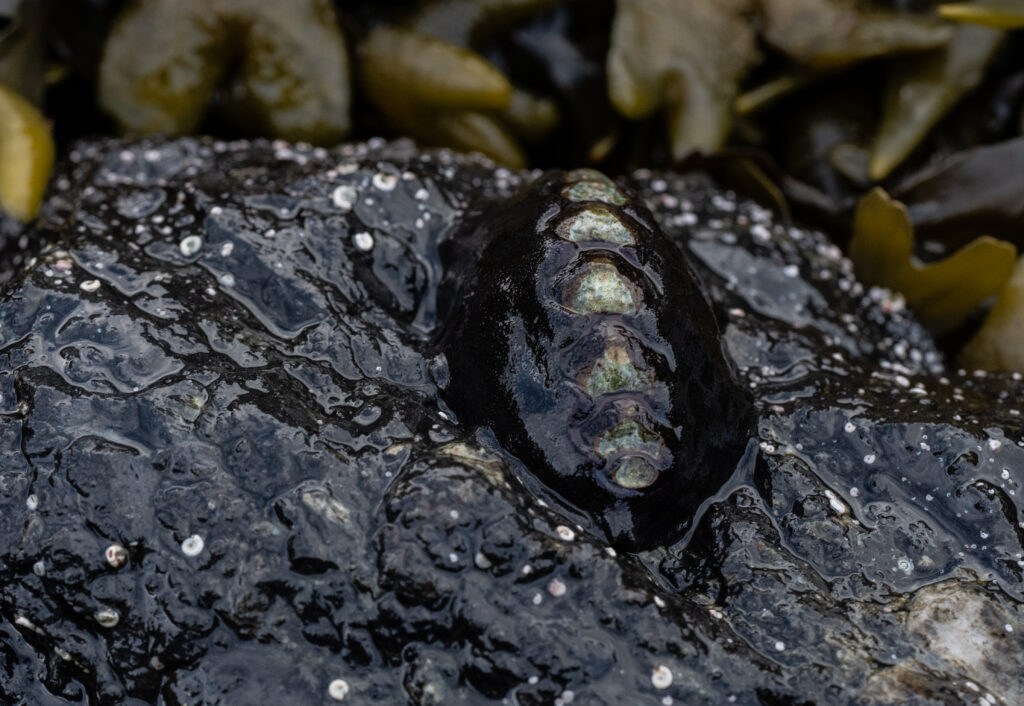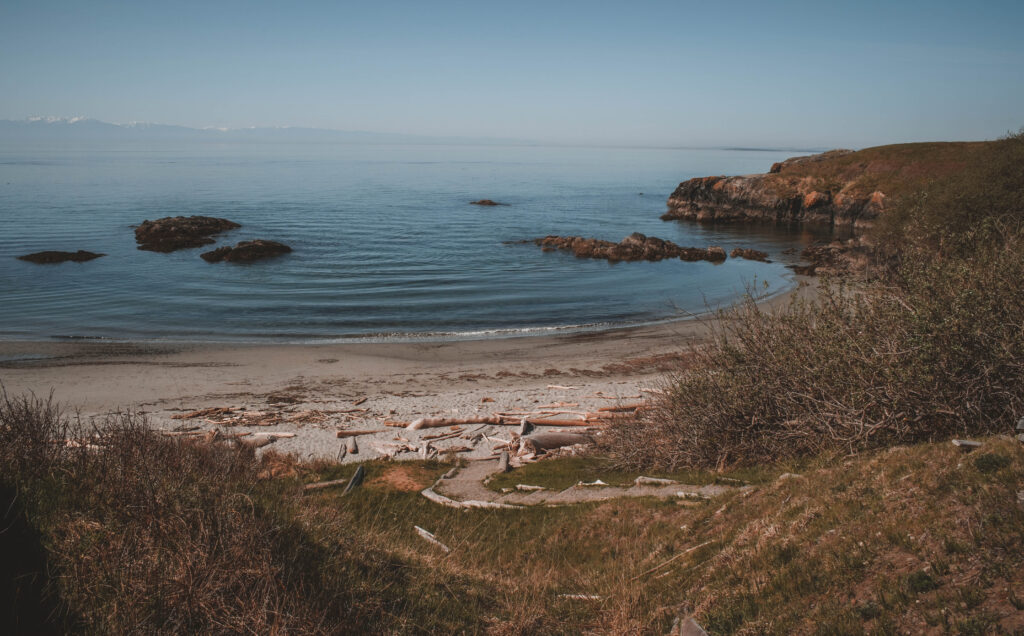Stroll along any local beach during low tide, and you’ll find the shore teeming with life! Tide pooling offers a unique glimpse into the vibrant ecosystems that thrive where land meets the Salish Sea. With over 400 miles of shoreline in San Juan County, we have no shortage of nooks and crannies to explore! But remember to explore gently to protect the plants and animals and their homes. Below, we are sharing tips on how to be a responsible tide-pooler.






Thanks to Harbor Wildwatch for the following “GUEST” acronym! It will help you remember these tips on how to be a responsible tide pooler!
G – Gently touch with one, wet finger.
- Ensure your hands are clean and sunscreen-free.
- Use one finger to minimize impact and wet it with seawater before touching.
- Never pull or pry attached wildlife from its habitat.
U – Use your head when rolling rocks.
- Avoid rolling or looking under rocks larger than your head.
- Carefully return rocks to the exact position you found them in.
- Be slow and gentle to prevent crushing animals that might be hiding.
E – Everything stays at the beach.
- Shells, rocks, and sea life (both dead and alive) are essential to the beach’s ecosystem; enjoy and leave them where you find them.
- If you find something of cultural significance, such as tribal artifacts, leave it in place and contact the Washington Department of Archeology and Historic Preservation [link: https://dahp.wa.gov/]
S – Step lightly when walking.
- Step on bare rock rather than living organisms whenever possible.
- Test your steps before putting your full weight down to avoid slipping or falling. Barnacle cuts really hurt!
T – Take your belongings (and beach trash!) when leaving.
- Practice “leave no trace” principles and take out anything that you bring with you.
- Carry a small bag or bucket to pick up trash you find while exploring. San Juan County waste facilities accept beach garbage for free!






When to tide pool
To find the best tide pooling times, use the “Tides Near Me” app to track low tides. The lowest tides typically occur during the day in June and July; while November and December also have low tides, they are often late at night.
Best Public Tide Pooling Spots in the San Juan Islands
Look for areas with large rocky exposures at low tide. The highest tide marks can be identified by the rows of sea vegetation and driftwood near the top of the beach.
San Juan Island:
- Granny’s (Grandma’s) Cove
- Lime Kiln Point State Park
- Deadman Bay Preserve
- Fourth of July Beach
- Reuben Tarte County Park
Orcas Island:
- Eastsound Waterfront Park
- Obstruction Pass State Park
Lopez Island:
- Odlin County Park
- Watmough Bay Preserve
Recommended ID Books and Guides
- The New Beachcombers Guide to the Pacific Northwest by J. Duane Sept
- Marine Species Identification – Sound Water Stewards
- The University of Washington has a great list of common seaweeds found in our area.
- Learn more about forage fish with Katherine Dietzman, Friends’ Shoreline and Mapping Specialist
- National Park Service tide pooling on San Juan Island
- Our Wild Puget Sound Tide Pooling Guide

